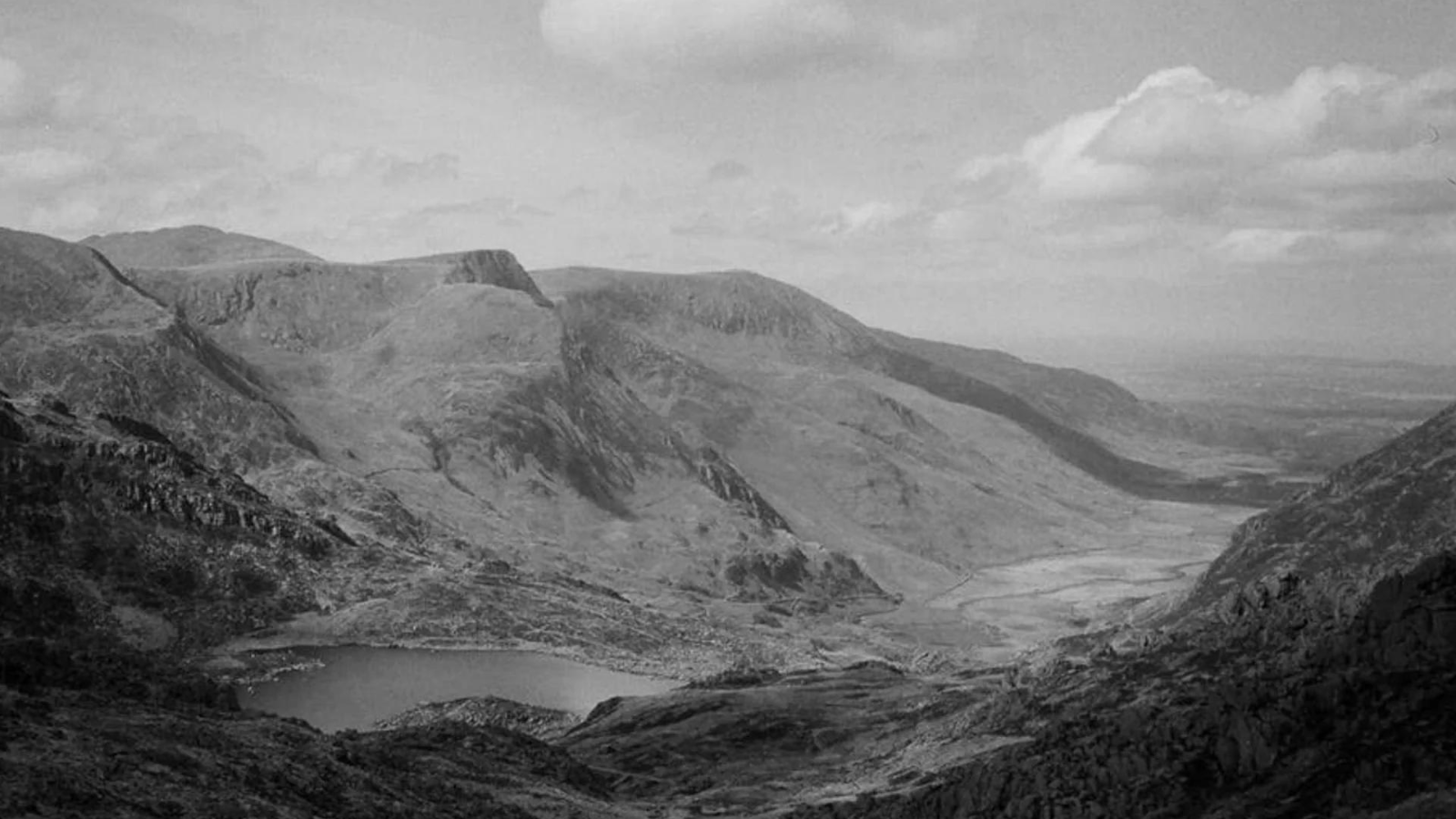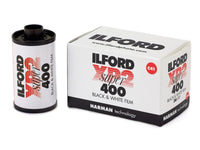Black Friday 2025 has landed at Analogue Wonderland, bringing some of our biggest film photography deals of the year - from discounted film and cameras to money-saving WonderLab processing offers, exclusive bundles, and festive specials available for a limited time only. Grab a great deal while stocks last!
Recent posts
Shop the article

The Best 35mm Film for Landscape Photography
By Paul McKay
This article is one of our community-lead pieces that pulls together views, opinions, and sample photos from the wider analogue group to provide recommendations and education for fellow film photographers! You can contribute to the project by submitting a film review directly through the product page on-site.
What Makes a Good Landscape Film Photograph?
Landscape photography can be some of the most captivating subject matter in the world. Even before photography was possible, people loved reproducing images of the landscapes that surrounded them.
Now, 35mm film photographers have loads of choices for which film stock they will choose to create images in the natural world. There are a few things to keep in mind when photographing nature or cityscapes, and choosing the right 35mm film to fit your vision. We have a page of common 35mm film FAQs here!

Photo (c) Paul McKay
There are a few things to keep in mind when choosing the best 35mm film for landscapes:
- Think about the grain. If you are doing a wide-angle landscape photograph, you need to keep the grain structure as small as possible. This is less important if you are doing other kinds of outdoor photographs, as the loss of finite detail will be less noticeable.
- Dynamic range matters. The more the better. We don't have to tell you that the sky is bright, even in the early morning, or late in the day. You can always increase your contrast later on, but it is next to impossible to expand the dynamic range (and recover highlight and shadow detail) of an image after it has been exposed.
- The film's sensitivity is probably going to be low. Slow film deals with the two considerations listed above. When making landscape photographs, you should be able to bring a tripod and get the best from your gear. If you choose to work without a tripod, you will probably be missing out on many landscape photograph opportunities.
The Best Black and White 35mm Film for Landscapes
Across the thousands of community reviews submitted, a few monochrome films stand out as having particularly high scores in the Landscape category. Let's countdown the top three!
3 - Ilford XP2 35mm Film
Ilford XP2 is one of the most versatile black and white films around, and it is a great choice for landscapes as well. One of the top community reviews calls out XP2's "great tones, sharp images and good details" [Obaro]
As a chromogenic film stock, XP2 can be pushed or pulled with excellent results. It is rated at ISO 400 but can be overexposed or underexposed (between 50-800) on the same roll without having to change the development process - to give you greater control over the grain structure and much better in-camera flexibility.
No matter how you decide to shoot and process XP2, it will deliver amazing dynamic range, and also fantastic tonal gradations. It is an inexpensive option as well, which makes it a very popular 35mm black and white film.

Photo (c) Obaro | Ilford XP2 35mm
2 - Kodak Tri-X 35mm Film
Kodak Tri-X 400 has been on the market for a very long time, and with good reason. It gives photographers incredible sharpness and a very tight grain structure for an ISO 400 film. If you have ever shot Tri-X, you know that it has great tonal gradations and a fantastic dynamic range.
One of the only drawbacks to Tri-X is its cost. Compared to many other emulsions on the market, Tri-X isn't cheap. This may or may not be a factor for your landscape photography. If you are a hobbyist, and not worried about costs, Tri-X remains one of the best choices for any kind of photography.

Photo (c) Louis Smith | Kodak Tri-X 35mm
1 - Ilford FP4 35mm Film
Ilford FP4 has a low speed of ISO 125, and as a result, it offers amazing grain structure and dynamic range. You don't have to worry about your shadows blocking up with FP4, and you can even underexpose it a bit and push it in development later on if you want to crunch the dynamic range a little bit.
At its rated 125, FP4 will give your landscapes loads of sharpness, and you will be able to decide how to print it later on. It is always nice to have the ability to introduce more contrast in the darkroom (or photoshop), and FP4 will ensure that you can make big prints with lots of detail.

Photo (c) Michael | Ilford FP4 35mm
Bonus - Kentmere 400 35mm Film
Kentmere 400 is a great film for people wanting good results from an affordable B&W film. It is often used by people just starting in film photography.
The soft backing allows for easy scanning, the images will have medium contrast and fine grain, and its mid-speed rating means it can be used in a variety of lighting situations.
"I like shooting with this film as it has nice contrast, its good in a wide range of light conditions, has just the right amount of grain that I like, you can tell its film, not digital, plus it's a value for money film". - Daryl Ball

Photo (c) Daryl Ball - @monochromemomento | Praktica BC1 | Kentmere 400 35mm
Bonus - CineStill BwXX 35mm Film
CineStill BwXX is an emulsion first used in 1959 to shoot movies in Hollywood studios. Films that have included scenes shot on this emulsion include Kill Bill Vol 1, Schindler's List, Casino Royale and Raging Bull - the definition of artistic royalty.
BwXX is officially rated at ISO 250 for Daylight and ISO 200 for Tungsten light, which is an interesting quirk of cinematic film speed. Photographers shooting at ISO 200 are highly unlikely to see any difference in the negatives.
"I have discovered an affinity for Kodak Double X. The tonality is just so rich and it has the “cinematic” look". - Daniel Joe
(CineStill BwXX is Eastman Kodak Double-X 5222 professionally packaged in 36 exposure cassettes for still photography).
The Best Colour 35mm Film for Landscapes
3 - Lomography CN800 35mm Film
For people that need a high-speed color neg film to capture outdoor images, this is a great choice. Lomo CN800 tends to be on the warm side and has excellent colour reproduction capabilities. It also delivers a lovely tonal range, especially for a fast film.
The high ISO means that in situations with variable light you will be able to quickly adapt - very useful if you're on a lovely hike and don't want to carry a tripod with you!
Of course, the relative grain of a high speed colour negative film in the 35mm format will limit your printing options for anything shot with Lomography 800, although this could also be used for an artistic effect.

Photo (c) Sergey V. Popov | Lomography 800
2 - Kodak UltraMax 35mm Film
It isn't difficult to see why Kodak Ultramax is a popular choice for landscape photography. Unlike many colour films, Kodak Ultramax delivers very true-to-life colour reproduction. It also sports ISO 400, which makes it a great choice for people who might want to do some handheld work in sunny situations.
Another reason why Kodak Ultramax is a great choice for landscapes or any outdoor work is that it is a consumer-grade film.
A retail-level film stock might turn off emulsion snobs, but from a practical standpoint, its ability to maintain its imaging capabilities and also deliver excellent image latency is great for people who might be trekking and shooting in the backcountry for a few weeks at a time.

Photo (c) Harriet | Kodak Ultramax
1 - ColorPlus 35mm Film
Kodak ColorPlus is a very popular film, and many photographers like that it offers great colour reproduction at a (very!) affordable price. It is the slowest color film on our list, and it gives you an ISO 200. Unless you are shooting this emulsion in very bright conditions, your landscapes will benefit from the use of a tripod.
One of the best things that ColorPlus has going for it is its neutral colour tones. As an ISO 200 speed film, it has a tight dye structure and will be able to make great looking prints. It isn't a warm film like many colour neg films, which gives the images a more balanced, modern look.
 Photo (c) Harriet | Kodak ColorPlus
Photo (c) Harriet | Kodak ColorPlus
Bonus - Kodak Ektar 100 35mm Film
Kodak Ektar 100 is a fantastic professional 35mm film for nature, wildlife and fashion photography thanks to its vivid colours and optimised sharpness. This also makes Kodak Ektar a wonderful holiday film, ensuring you come back with photos that burst with life!
"Great film for landscapes, especially if there is a blue sky". - Barrie Anthony
 Photo (c) Barrie Anthony - @adventure_in_analogue | Nikon FM2 | Kodak Ektar 100
Photo (c) Barrie Anthony - @adventure_in_analogue | Nikon FM2 | Kodak Ektar 100
Why Not Try Slide Film?
Kodak Ektachrome 35mm Film
Kodak Ektachrome is one of the sharpest transparency films on the market, and it is a great choice for landscape photography. As a slide film, it has great resolving power, and also will give you true-to-life colour reproduction when used outdoors.
With a rated ISO sensitivity of 100, Ektachrome is on the slow side. You will need to ensure that your camera is very stable with this film, if you want to take full advantage of its sharpness. Aside from the speed, there are very few things about Ektachrome that could be considered negative.
 Photo (c) Serge Chabert | Kodak Ektachrome E100
Photo (c) Serge Chabert | Kodak Ektachrome E100
If you've shot a roll of landscape photographs then don't forget that we offer film developing here at the WonderLab!
Huge thanks to the wonderful contributors who wrote reviews and submitted photos for the greater knowledge of the community! If any contributor would prefer us to send a credit link direct to their Instagram/Facebook/website instead of their review then please let me know by dropping a quick line to karen@analoguewonderland.co.uk
Ready to dive in?
Keep Reading
View all
Christmas 2025: Shipping & Opening Hours
Christmas 2025 is fast approaching! To make sure your analogue goodies arrive in time, take note of our last shipping dates, plus opening and operating hours over the festive season. We've got everything you need to gift the magic of film photography this Christmas!

Film Photography Christmas Gift Guide 2025: Analogue Wonderland
Capture the magic of Christmas with film - no filters needed. Our 2025 Film Photography Christmas Gift Guide 2025 is packed with thoughtful presents for every type of shooter, from curious beginners to seasoned photographers. Discover film stocks, cameras, and creative accessories that will make this festive season truly memorable.
Subscribe to our newsletter 💌
Sign up for our newsletter to stay up to date on film photography news, sales and events:
Free Tracked Shipping
On all UK orders over £50
Passion For Film
An unbeatable range and an on-site lab
Our Customers Trust Us
Thousands of independent 5* reviews
All Deliveries are Carbon Neutral
Independently audited and verified by Planet
- Opens in a new window.








